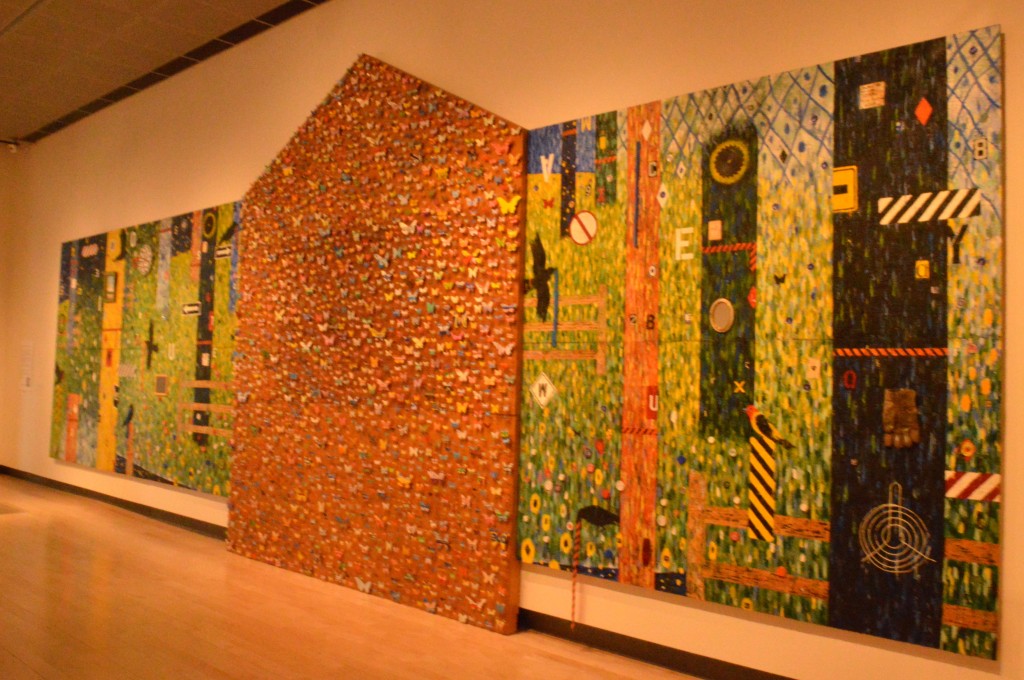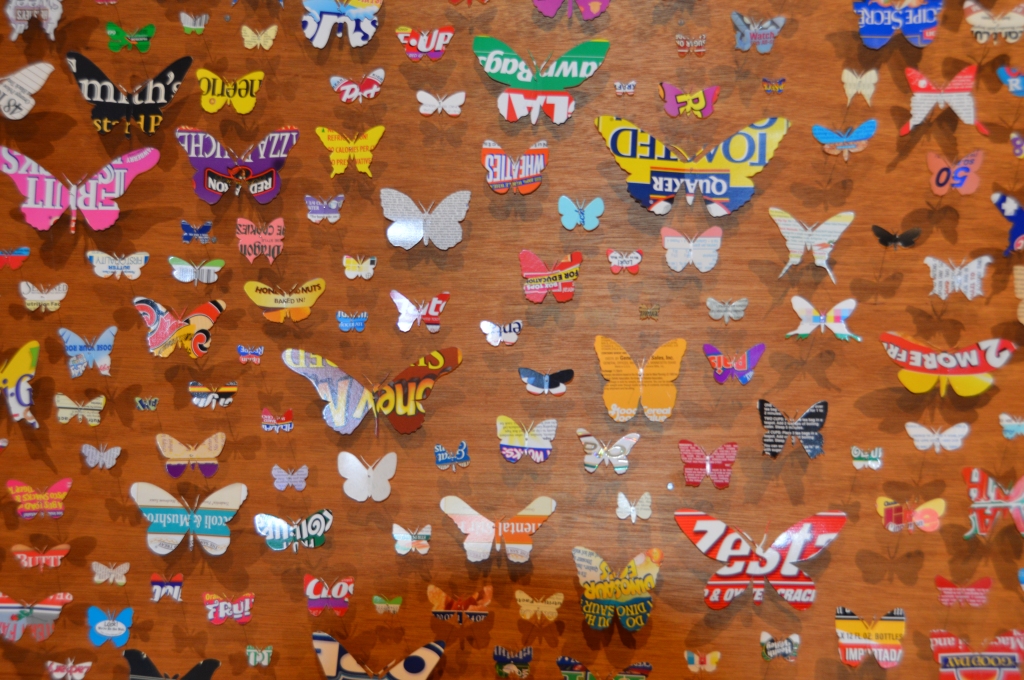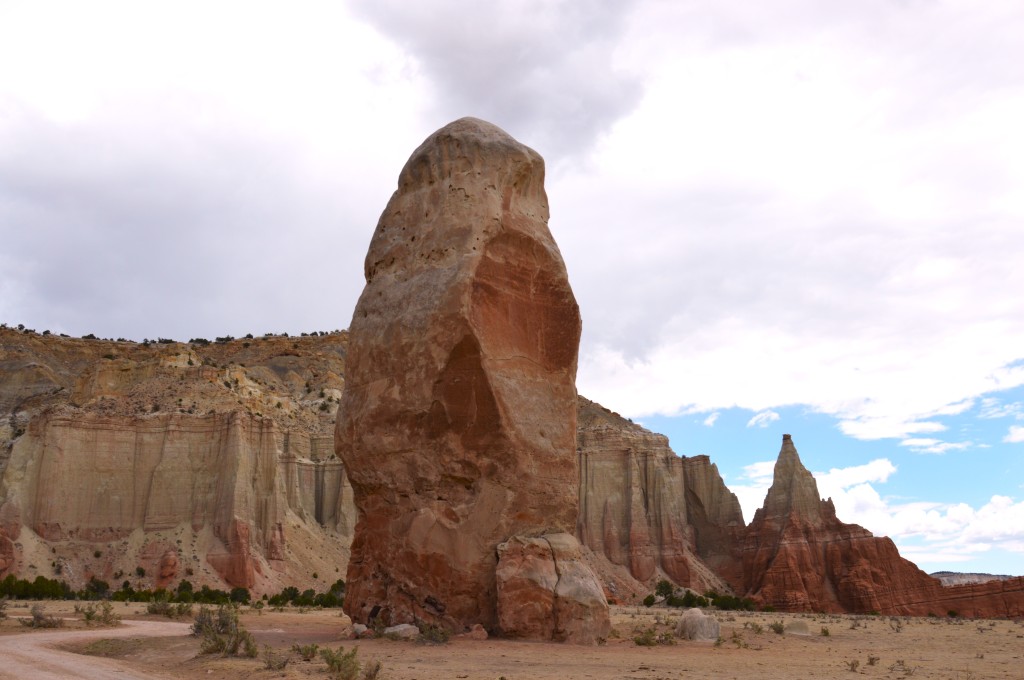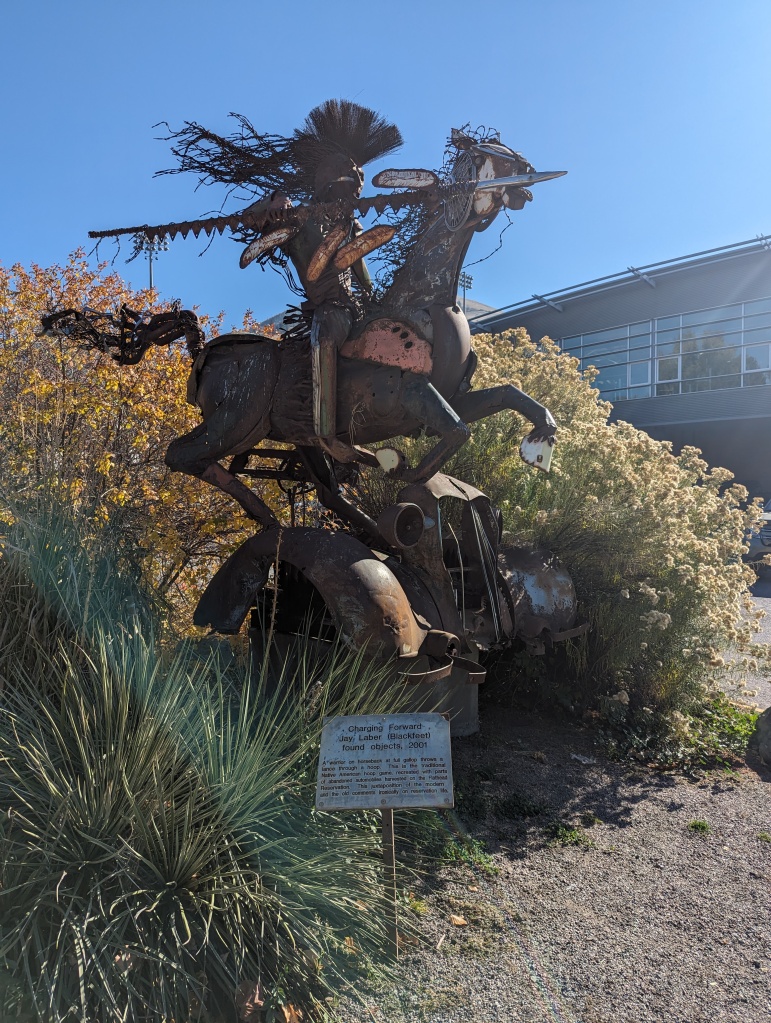The current exhibit at the Missoula Art Museum (MAM) is Human//Nature-A Retrospective from the collections of Terry Karson is the ultimate recycling project.
“I take stuff people throwaway and turn it into art.” Terry Karson

Commons was built into the Aresty Gallery at MAM in 2012 as an immersive experience. Karson created tiles made of discarded cardboard packaging, such as cereal boxes and beer cartons, that were sanded, sorted by color, and assembled into grids, then built into architectural sculptures. He referred to them as “nature and culture.” Only portions of the original installation are in this exhibit but are still impressive. A diorama of the original exhibit seems like walking within a temple. I would love to see Commons in its entirety.


Karson and his wife, Sara Mast, collaborated on Indian Flats, another large-scale installation created from trash found around the remote mountain cabin in Helena National Forest where they lived and began this creation. Karson filled glass boxes with that litter. I think of these stacked boxes as the “Tower of Trash.” The abstract paintings are by Mast. On the paintings are found game pieces, bottle caps, a dartboard, mirror, framed painting, bicycle crankset, a necklace, and more. The centerpiece represents the hut they lived in and is covered with butterflies cut out of cardboard packaging.


“Natural History collections by necessity involve death. Glorifying found objects involves resurrection.” Terry Karson.
Karson took scraps of coffee packaging and rolled them into the shape of larvae and pinned them to a board as an entomologist would.


The exhibit is beautiful and moved me to write a blog about garbage.
In the late 1990s, I worked at a home furnishings store for the holiday season and was horrified to see the amount of waste that goes into the purchase and giving of a gift. Merchandise comes in large crates that are unwrapped to reveal smaller, well wrapped parcels. The outer and inner wrappings are broken down and discarded. Some of the discarded wrapping goes to recycling, but there is a tremendous amount of trash in plastic bindings, Styrofoam cushions, etc. that are taken to the landfill.
Lovely objects are artfully displayed for customers to choose from. At purchase, they are carefully wrapped in tissue, boxed, and placed into carrying bags to take home, where the box is wrapped in festive paper to be given as a gift. The recipient tears off the wrapping, utters words of appreciation for the contents, and disposes of the wrapping, tissue, and box. This is one gift from one store. Imagine all the stores and sources worldwide, and all the gifts given, and then imagine all the packaging generated that becomes garbage.
Americans generate 268 million tons of trash annually. That is nearly 1,800 pounds per person every year. Of the waste discarded, 65.4% is dumped into landfills or burned in incinerators. Only 36.4% of discarded materials are composted or recycled. And then there is litter; there are nearly 50 billion pieces of it along roads and waterways in the United States.
The U.S. generates 12% of global municipal solid waste (MSW); whereas China and India with a combined population eight times that of the U. S., generate slightly more than twice the MSW than Americans.
It is estimated that there are 75 to 199 million tons of plastic waste eddying over 40% of the world’s ocean surface; 70% of this debris sinks into the ocean’s ecosystem, 15% floats, and 15% lands on beaches. Every day, eight million pieces of plastic make their way into our oceans. At the rate plastic is dumped into the ocean, it is predicted that plastic will outweigh all the fish in the sea by 2050. Floating plastics keep circulating, breaking down into smaller and smaller pieces that are harder to clean up and easier to mistake for food by sea life.
The Great Pacific Garbage Patch (GPGP), located between Hawaii and California, has the largest accumulation of ocean plastic. The Ocean Cleanup has been monitoring and removing plastic pollution in oceans and rivers globally since 2019. A catch runs hundreds of tons, and with improved operations, catches are growing larger. However, plastic will continue to impact our ecosystems, health, and economies for centuries.


Glass is not keenly recycled because it breaks and requires more cleaning and sorting than plastic, making it less profitable to recycle. However, unlike plastic, glass can be recycled endlessly with no loss in quality or purity.
After water, sand is the second most extracted resource on our planet and is in danger of becoming scarce. Sand is used in building homes and roads, agricultural fertilizers, computers, and electronic chips, as well as glass. Between 40 and 50 billion metric tonnes of sand are removed from rivers, lakes, and beaches around the world each year. That would build a wall 87.5 feet tall and 87.5 feet wide around the globe. Mexico City is addressing part of this problem with a concrete recycling plant to reuse demolition waste for aggregates and pre-mixed concrete or asphalt.
I became aware of sand mining a few summers ago as I drove around the southwest desert. On a less traveled highway, the horizon seeming too far to reach, the monotony of the road was broken by magenta, pink, and ochre-colored buttes and spires. I was enthralled with their beauty in the stark landscape, and then I saw convoys of large flatbed trucks heaped with sand that excavators were clawing out of these stunning formations. Tears streamed down my face seeing the destruction of these natural wonders that took millions of years to create.

As I began digging into garbage, I found that I could fill pages with statistics. I’d rather seek ways to resolve the problem of garbage and the cause of it: rampant consumerism that depletes our natural resources to become garbage. As we take from and destroy one resource, we destabilize other fragile ecosystems. It’s also important to look at what is being accomplished to give us hope, to think about what more we can do to resolve the garbage problem, and to take on the responsibility of good citizens to care for our home, Planet Earth.
While recycling is still not implemented to its highest and best capacity, industries are being created utilizing recycled garbage. Many of us own shoes, clothing, rugs, yoga mats, furniture, car parts, and pens made from recycled plastic. Making products out of recycled plastics instead of new plastic reduces energy usage by 66%, and for every ton of plastic recycled, the equivalent of one to two thousand gallons of gasoline are saved. However, plastic can only be recycled two or three times before the quality becomes inadequate for use. Glass and aluminum don’t degrade during the recycling process and can be recycled endlessly. By the way, it is estimated that known oil-deposits will run out by 2052. Plastic is made from oil.
There is a company called Ridwell that picks up recyclable and reusable items not usually taken by recycling companies: batteries, lightbulbs, fluorescent tubes, clamshell containers, flat lids, bottle caps, bread tags, prescription bottles, Styrofoam, and reusable and non-reusable clothes, shoes, linens, and towels. Ridwell operates in California, Colorado, Georgia, Minnesota, Oregon, Texas, and Washington. I used Ridwell when I lived in Oregon and loved doing business with them. I found them to be friendly, professional and efficient.

Beyond recycling, we need to become less wasteful. The concept of zero waste is becoming a goal for cities and countries to break the trash to landfill cycle completely by 2040 or sooner. Some steps being taken are banning Styrofoam, plastic bags, and single use plastics. We should also be mindful of decreasing our personal waste by taking reusable shopping bags with us when we shop, or not taking a bag for smaller items, and choosing to buy items with the least amount of packaging. Carry a water bottle instead of buying water in plastic bottles. There are many public places that now have fountains for filling water bottles. Use cloth napkins instead of paper napkins. It’s easy to wash cloth napkins with your laundry.
And then there is the circular economy, an economic system of continuing production and consumption in a sustainable and environmentally friendly way. It reduces waste to a minimum by sharing, leasing, reusing, repairing, refurbishing, and recycling existing materials and products as long as possible.
Many libraries now have “things” to lend, from sewing machines and electric drills, to camera lenses and tripods. Before the pandemic, there were community Repair Faires where you could take a non-working item and have it fixed. There were seamstresses who repaired clothing, motor enthusiasts who repaired inoperable appliances, and computer techs to figure out what ailed your laptop. It would be great to see those happen again.
I’ve thought about “purchasing power.” It’s defined as the amount of goods and services that can be purchased with a unit of money. What if we established our power in how we purchase, and change the idea of supply and demand by not purchasing what we don’t need? If enough of us do this, Big Business will adjust to the way we spend money. There are unlimited opportunities for entrepreneurs to start businesses within the circular economy by creating what we need from recycled resources. Put your thinking caps on!

I’ve begun carrying a bag with me to pick up litter on my walks. It’s amazing how much litter there is within a short distance of trash bins. When I was growing up the motto was:
Don’t Be a Litterbug


Charging Forward, Jay Laber, Blackfeet. Found Objects, 2001 University of Montana, Missoula
“A warrior on horseback at full gallop throws a lance through a hoop. This is a traditional Native American hoop game, recreated with parts of abandoned automobiles harvested in the Flathead Reservation. This juxtaposition of the modern and old comments ironically on reservation life.”

“The human race is challenged more than ever before to demonstrate our mastery, not over nature but of ourselves.” Rachel Carson, Silent Spring
Human//Nature-A Retrospective from the collections of Terry Karson will be on exhibit until July 27, 2024. If you live in Missoula or are visiting, be sure to visit the Missoula Art Museum. There are lots of other interesting things to see there as well.